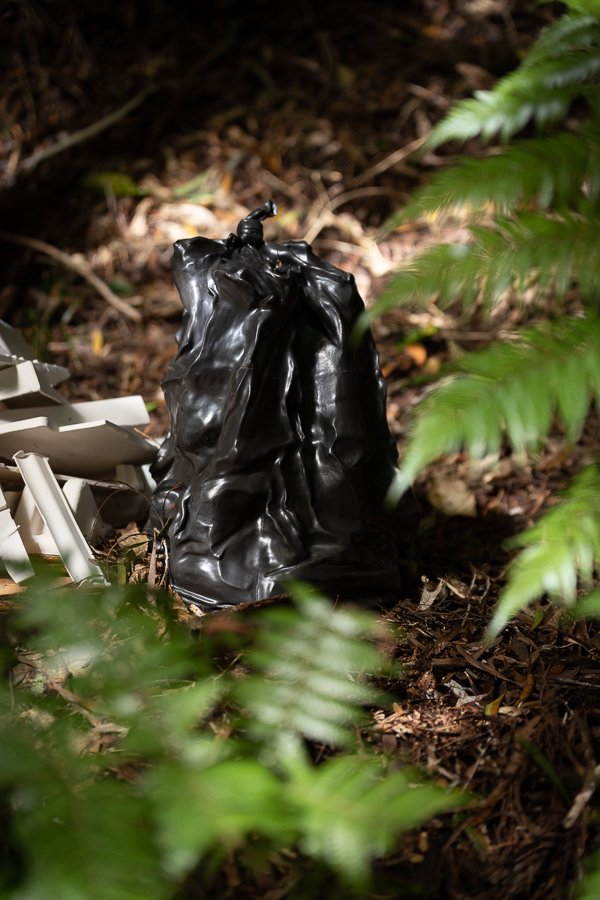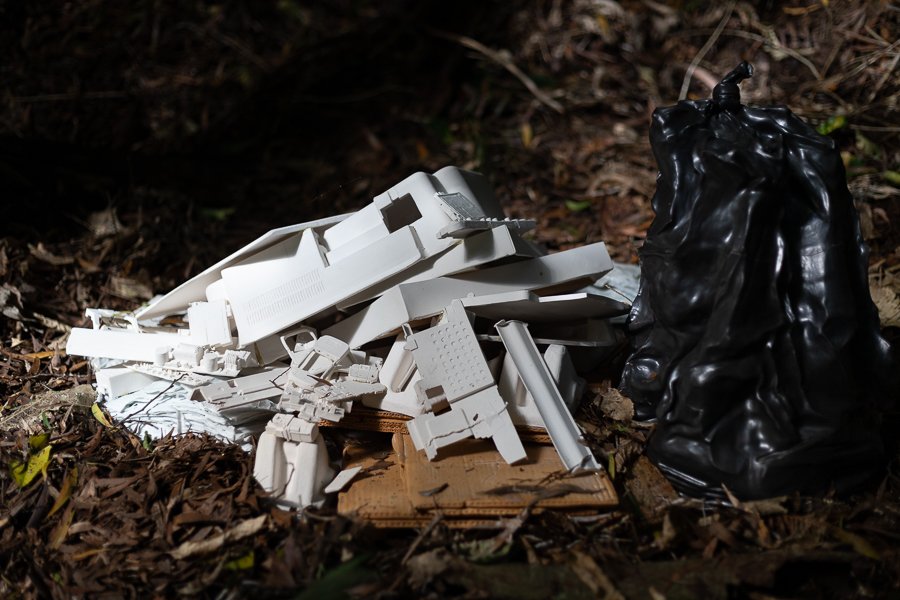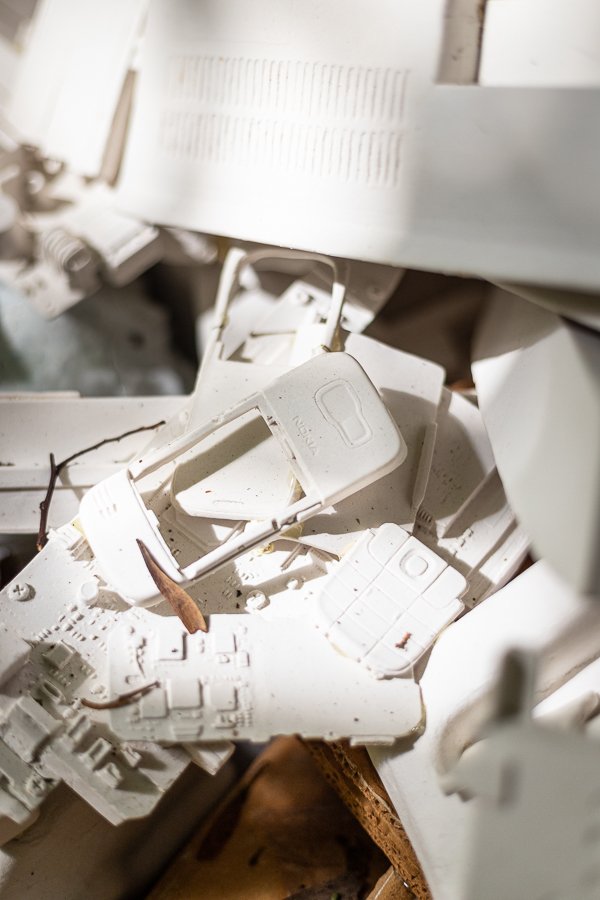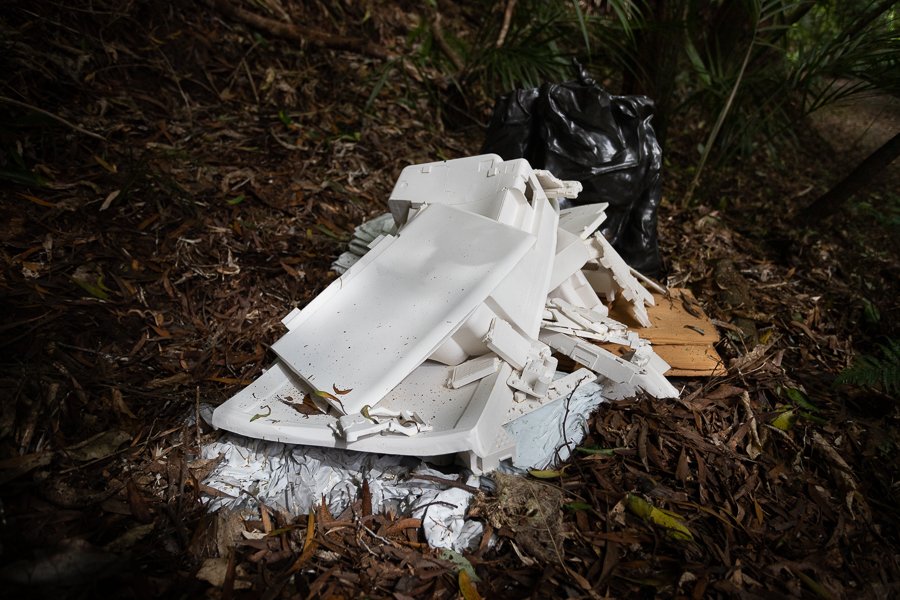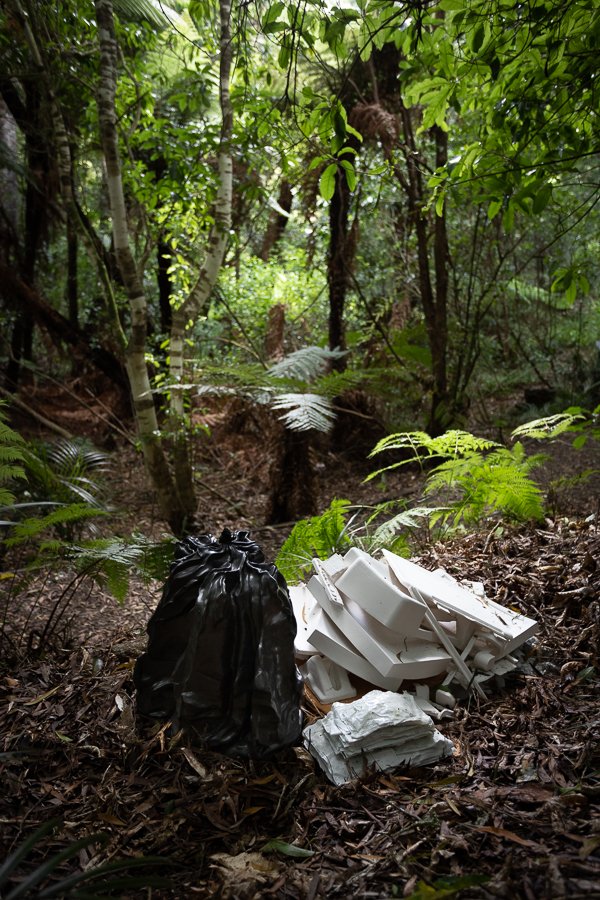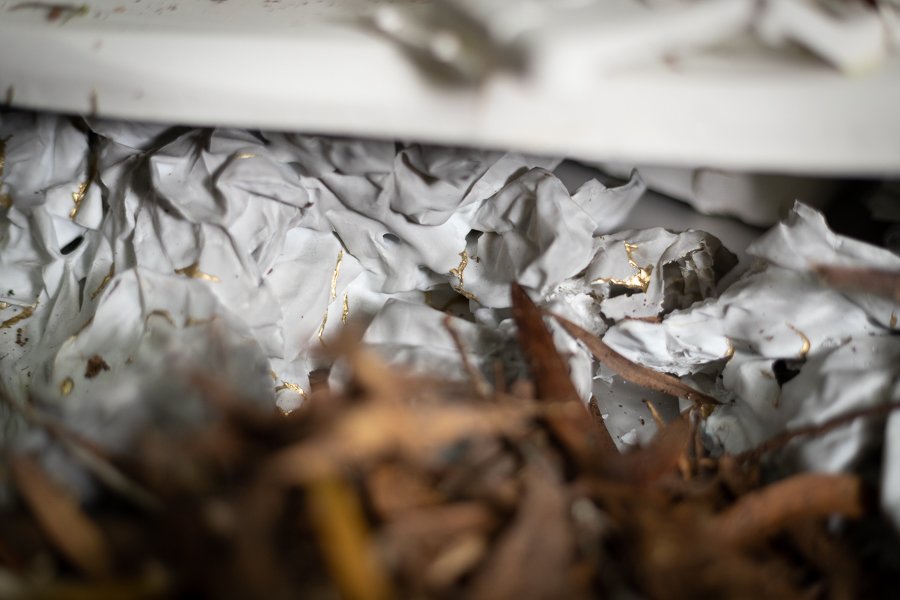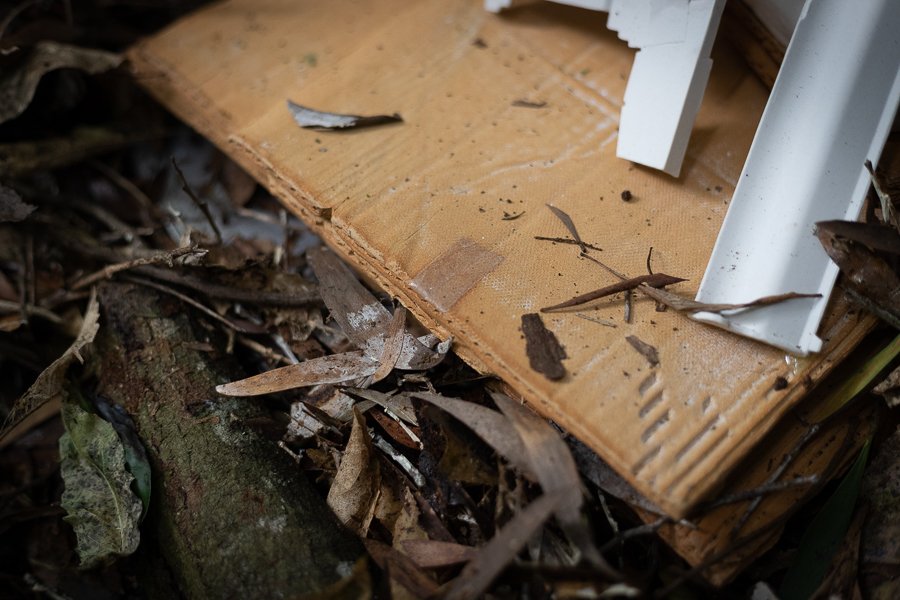marita hewitt
The Symphony of Worth and Worthlessness, 2021
Porcelain, stoneware, glazes, resin, stainless steel
480 x 1200 x 800mm
Price on request
At first appearing as the remnants of a forgotten project or the ruins of an illegally dumped rubbish pile, the encounter with Marita Hewitt’s Symphony of Worthlessness might evoke an initial response of skepticism or puzzlement from viewers. And while that response is encouraged by the artist, her artwork also requires more careful viewing and consideration to tease out the reality of its existence from trash to treasure. On closer inspection, a slumping black rubbish bag and a pile of old cardboard reveal themselves as glazed stoneware while the packaging seemingly made from polystyrene is an assemblage of exquisitely crafted casts made from delicate white porcelain.
Described by the artist as a ‘trompe l’oeil treasure of trash’, Hewitt’s sculptural assemblage seeks to question our modern sociological relationship with production, consumption and waste. The installation comprises a number of earlier porcelain and stoneware works which were moulded, sculpted and cast by the artist, documenting an inquiry into her electronic and packaging waste between 2011 and 2016.
As Hewitt explains: “A circular, zero-waste ideology lies at the centre of my practice, driving both process and exploration. I collect various personal waste streams to use as both material and muse, lionising these sometimes mundane fragments of presence in a pragmatic metaphysics of destruction and renewal.”
Piled into a careful heap, the objects read as a complex history of personal storytelling as we observe parts from the artist’s Macbook computer and Epson Stylus camera, along with piles of receipts and junk mail. There is a deliberate tension between the fragile beauty of the crafted porcelain and stoneware components and the distasteful character of the throwaway society they represent.
In the way we gaze upon the relics and ruins of civilisations past through preserved sites and archeological digs, Hewitt’s assemblage urges us to observe the constructs of our own society with a curious and critical eye. What will future civilisations make of our absurd rubbish piles, which we consider ‘thrown away’ to be out of sight and out of mind, but which will long outlast us? Will trash piles be mined and studied, and if so, what clues will they offer to our society? With the clever staging of this artwork, Hewitt encourages us to reflect on our collective ecological footprint and gently calls for a more responsible way of living.


